- Savage Blog
- Overview of the Basics of Trapshooting
Overview of the Basics of Trapshooting
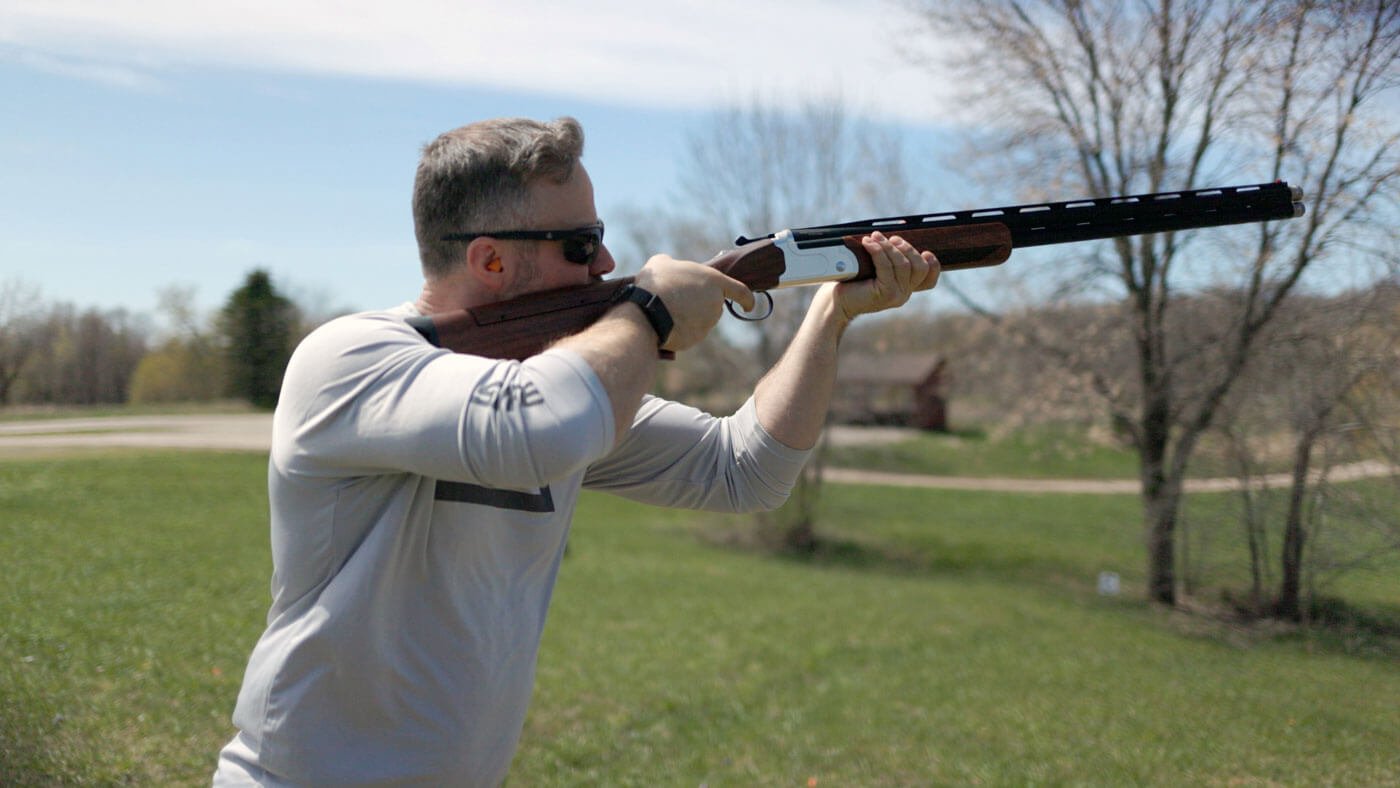
Trapshooting has been around for hundreds of years as both a shotgun game and method of practicing for hunting. Today, trapshooting is enjoyed around the world by participants of all ages. In the US, trapshooting is enjoyed recreationally and competitively by youth and adults who participate through their local shooting club, trap team, or school organizations. The basics of trapshooting are relatively simple to master, yet the complexities of the sport can take years for even the most experienced trapshooters to master. We’ll outline the rules of trapshooting, the layout of a standard trap field, equipment selection, ammunition, shotguns, choke tubes, and some tips on the proper shooting form. Get ready to take a deep dive into learning the basics of trapshooting!
Rules and field layout
The standard trap field consists of a trap house with five shooting stations. The stations are arranged in a slight arc 16 yards away from the trap house, with station one beginning in line with the left corner of the trap house and station five ending in line with the right corner of the trap house. The stations are designed to help simulate various angles and positions the shooter may find themselves in if they were bird hunting, and the random throwing direction of the trap thrower also helps simulate this.
Part of what makes the basics of trapshooting easy to learn is the straightforward rules of the game. The game itself is relatively simple, the shooter with the highest number of hit targets in the match wins. The targets that are shot are small, orange discs made out of hardened clay. You may hear these discs referred to as "clay targets", “clay pigeons” or “blue rock”, but all of these names refer to the same orange clay discs. These discs are thrown from a target thrower, often housed in a structure called the trap house. This trap house is where you will focus your attention before the shot as you look for the target to be thrown.
Here are some of the basic rules and procedures that are helpful to know as you are learning the basics of trapshooting:
- There can be up to five shooters on the field at one time. These shooters collectively are referred to as a “squad”.
- The shooter who starts the match on station one is referred to as the “squad leader”. This shooter will be the first shooter at the start of each round, as well as after each rotation to a new station.
- Each shooter shoots five targets per station. The targets are shot one at a time, with each shooter taking a turn until their five targets for that station have been shot.
- To call for a target, the shooter yells “Pull”, after which the target will be thrown from the trap house.
- If the target comes out of the trap house broken, the scorekeeper will call “no target”, and the shooter will be able to repeat the throw.
- If a target is broken by the shot, it will be called a “hit”. You may also hear a hit target referred to as “dead”, a homage to the origins of the sport in pigeon hunting and its continued use as practice for upland bird hunting.
- If you miss the target with your shot, it will be called either “miss” or “lost”.
- In order for a target to be considered broken or “hit”, a physical piece must be broken off. A target that has dust come off it but does not break is considered a missed target.
- After the shooters have shot five targets for their station, they rotate to the station to their right. The squad leader will then start the next series of five targets.
- This process is repeated until each shooter has shot on each of the five stations. A total of 25 targets should be shot in each round.
- A typical trapshooting match will have anywhere from two to four rounds.
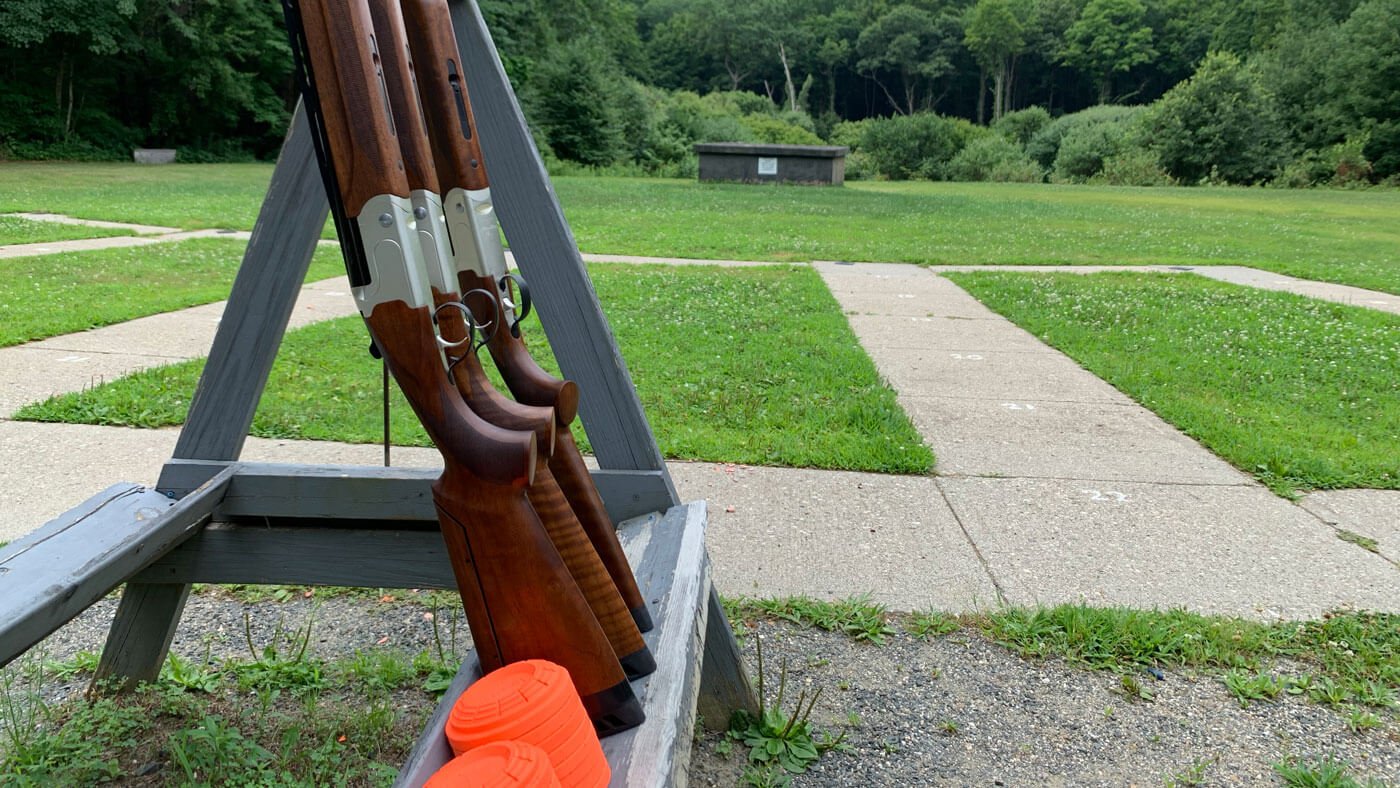
There are a variety of organizations that hold trapshooting matches around the country. Each of these organizations will have slightly differing rules and field layouts, depending on the level of competition. Here are some of the most popular trapshooting organizations for both youth and adults in the US:
- 4H Shooting Sports
- Scholastic Clay Target Program
- USA Clay Target League
- Amateur Trapshooting Association
Trapshooting is growing rapidly in popularity for youth who want to get into shooting sports nationwide. You can learn more about trapshooting and its impact on youth shooting sports here!
Many states also have their own state level trapshooting associations. You can look for the association in your state and join to learn more about the basics of trapshooting and compete in matches to hone your skills!
Trapshooting equipment
When learning about the basics of trapshooting, you will find that you don’t need much equipment to get started. In fact, all you really need is some ear protection, eye protection, and a trap bag or pouch to hold your shotgun shells. With these basic pieces of equipment, anyone can get started in trapshooting!
Eye and ear protection are the most important and basic pieces of equipment needed for any shooting sports activity. Most trapshooters will opt to use ear plugs or slim earmuffs for their hearing protection. This is because holding your head on the stock is critical for accurate trapshooting, and bulky earmuffs may not allow you to fully rest your head on the stock. For eye protection, some shooters will either black out the lens covering their non-dominant shooting eye, or they will put blinders on the sides of their glasses. Both of these are used by some shooters to help them concentrate on the target, but neither is necessary for a new trapshooter to use.
The trap bag is usually attached to a belt that goes around your waist. Most trap bags come with two or three separate pouches to hold shotshell boxes, empty shotshells, and tools such as chokes or choke wrenches. One tip that can help you remember how soon until you rotate stations is to keep your shotgun shells in the box in the trap bag. The shotshells are stacked in rows of five within the box, so as you pull shells from the box while you are shooting you will have a visual reminder of how many targets you have remaining until rotating to the next station.
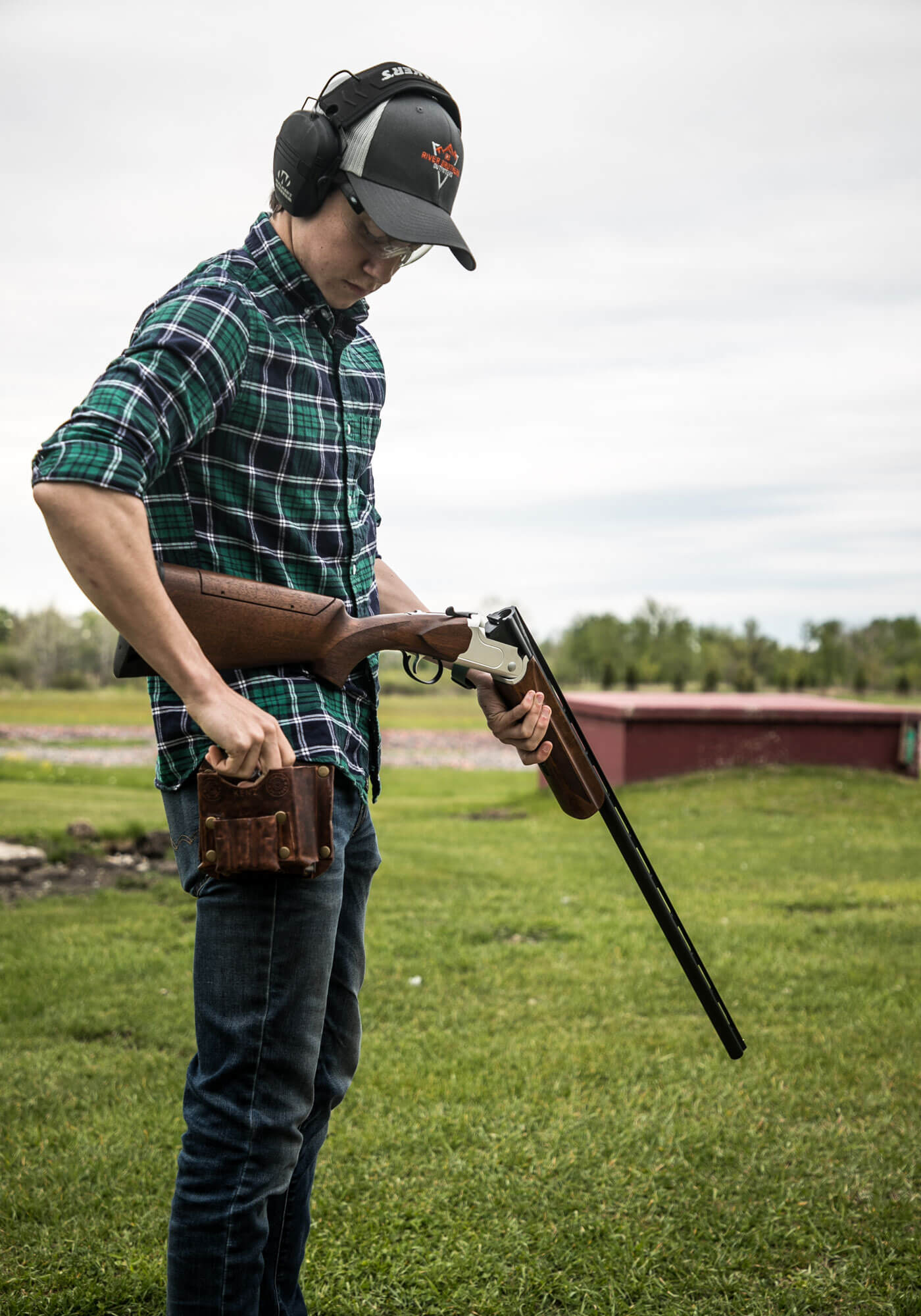
Shotgun selection
Aside from safety equipment, the shotgun you select is one of the most important decisions you will make when you are learning the basics of trapshooting. There are two important parts of a shotgun to consider: the gauge and the action type. The gauge of shotgun you use ultimately comes down to personal preference. The larger the gauge (lower the number, i.e. 12 gauge is larger than 20 gauge), the more pellets there will be in each shotshell and the denser the pattern will be. This will result in a higher chance of a hit target. However, larger shotgun gauges will also have more recoil. This is why sub-gauge options such as the 20 gauge are also very popular options among youth and recoil-sensitive shooters for their balance of performance and recoil. The action of the shotgun you use will also come down to personal preference, with each having its own advantages and disadvantages. There are three main shotgun actions that are used for trapshooting. These are the pump-action, the semi-automatic, and the break-action.
Pump-Action
Pump-action shotguns are good for new and novice shooters as they are common, relatively inexpensive, and easy to learn and operate. The shell is loaded and unloaded by pumping the slide of the shotgun, and this is entirely controlled by the shooter. Unlike other games such as skeet and sporting clays, speed is not a factor in trapshooting, which helps put the pump-action shotgun on a more level playing field. Savage’s Stevens 320 Field Grade shotgun is a reliable pump-action option that is affordable for new trapshooters who want to learn the basics of trapshooting.

Semi-Automatic
Semi-automatic shotguns operate like other semi-automatic firearms, where the shotshell is ejected automatically and a new shell is loaded after each shot, if the magazine is loaded. In trapshooting, only one shell is typically loaded in the shotgun, so a semi-automatic action does not provide any advantage in terms of speed. Where semi-automatic shotguns may provide an advantage is in comfort to the shooter through reduced weight and reduced recoil, which can help shooting performance. The Savage Renegauge is an excellent choice for trapshooters who are looking for a semi-automatic shotgun that is reliable, easy shooting, and adjustable to nearly every shooter. For trapshooters who are looking for a budget semi-automatic shotgun that will be a workhorse on the trap field and the hunting field, the Stevens 560 is also a great option.
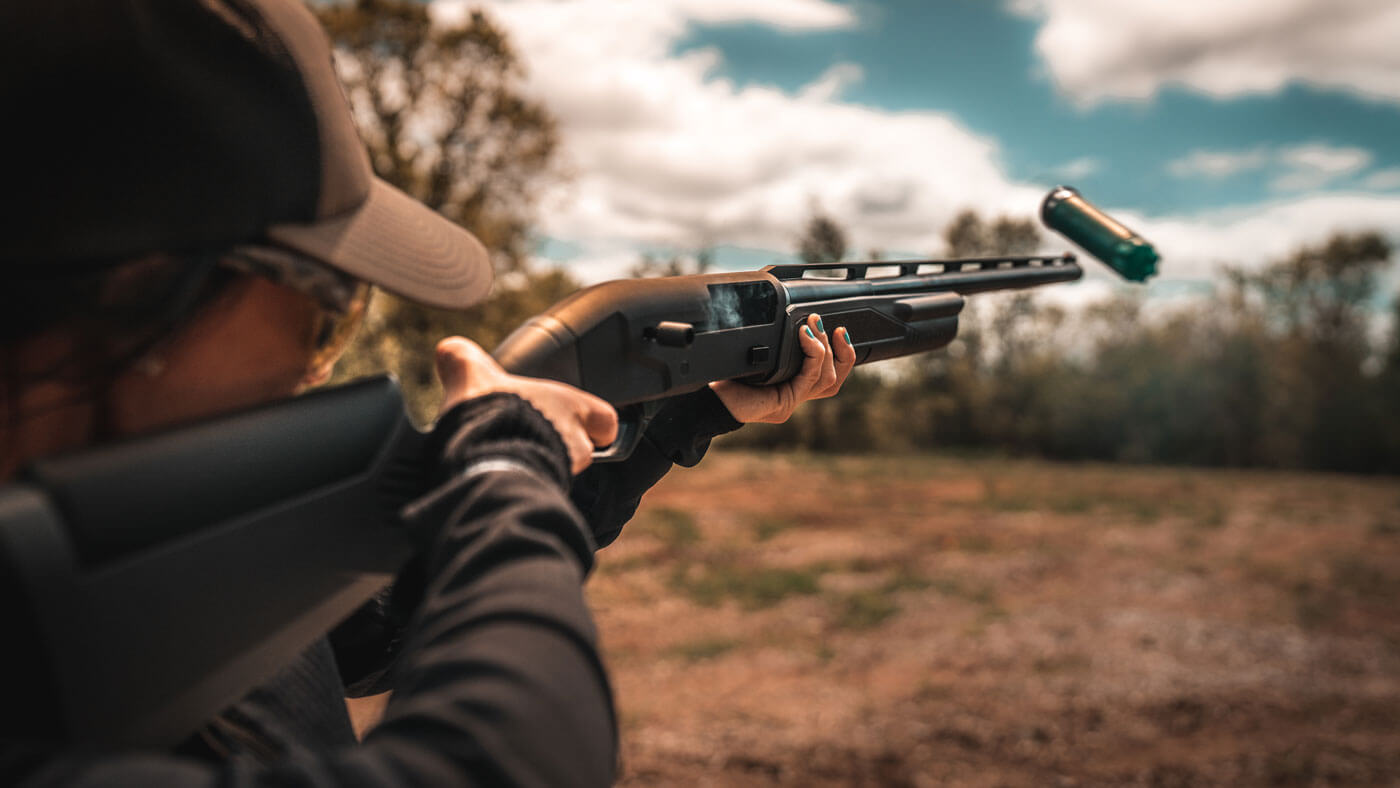
Break-Action
Break-action shotguns are fairly popular with shotgun shooters. Most break-action shotguns come as double-barrel shotguns, with two barrels either stacked on top of each other or side by side. This allows the shooter to have two shells loaded simultaneously, allowing for a rapid follow-up shot. Like semi-automatics, this advantage is not exploited in trap shooting when only one shell is loaded. However, many shotgun shooters like to use break-action shotguns as they can be lightweight, ergonomic, and are well regarded for their simple design, ease of use, and their mechanical reliability. Savage offers several different break-action shotguns in the Stevens 555 shotgun line, including a 555 Trap shotgun with a single break-action barrel and adjustable comb height, a 555 Compact model for youth and smaller shooters, and a 555 Sporting model with over/under barrels and an adjustable cheek comb.
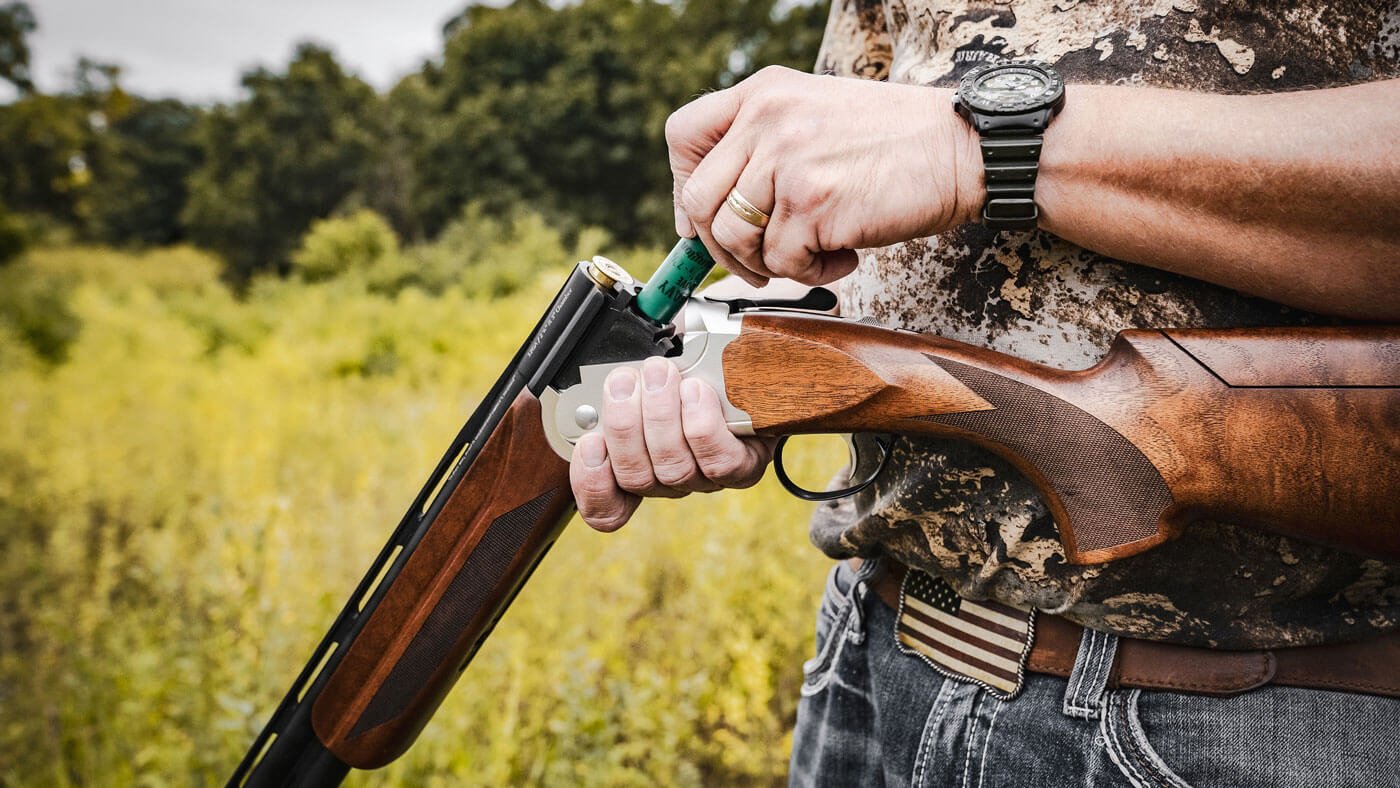
Ammunition and choke tubes
The ammunition used for trapshooting is the most commonly available shotgun ammunition today. This ammunition is typically referred to as “game loads”, “target loads”, “field loads”, or something similar. These loads are typically lead shot and will usually have a picture of a clay target or a small game animal such as a dove or rabbit on the box. They will also usually say “Game Load”, “Field Load”, “Target Load”, or something similar on the box. Most target loads will have specifications similar to the following:
- ⅞ to 1 ⅛ oz. of shot
- 2 ¾ inch shell length
- #7 ½ or #8 shot size
- 1150 to 1350 fps
If you find ammunition with similar specifications to those that are outlined above, then it will be great to use for trap shooting!
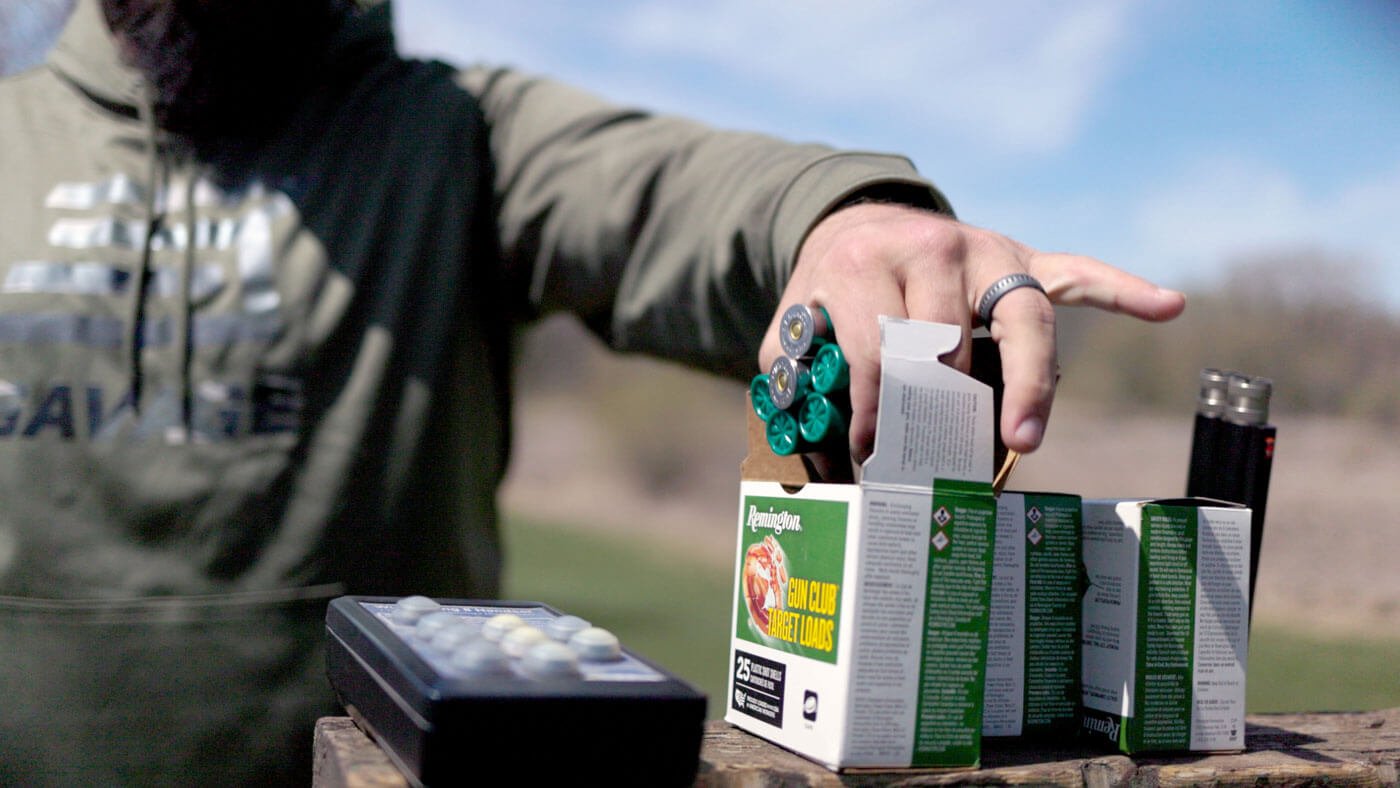
Choke tubes are important for getting the proper pattern size when trapshooting. If your pattern is too big, then there may be holes in the pattern where the target can sneak through and not be hit by any pellets. If your pattern is too small, then you will miss the target entirely. The ideal trapshooting pattern is wide enough to allow some margin for error, but small enough to be consistently dense and not allow any gaps in the pattern. To pattern your trapshooting shotgun, shoot a 30” circle at around 30 to 35 yards. If the majority of your pattern is spread evenly within the circle, then that choke tube shoots a good-sized pattern for trapshooting out of your shotgun.
Most trapshooters will use improved cylinder or modified choke tubes in their shotguns. These two choke tube patterns often provide the best compromise between pattern density and pattern size at 30 to 35 yards, which is typically how far the target will be from you when you try to shoot and break the target. Choke tube patterns such as skeet chokes will often be too open for trapshooting, while a full choke pattern will typically be too small and too dense to effectively hit the target. To learn more about how choke tubes affect shot pattern size, check out this choke tube blog.
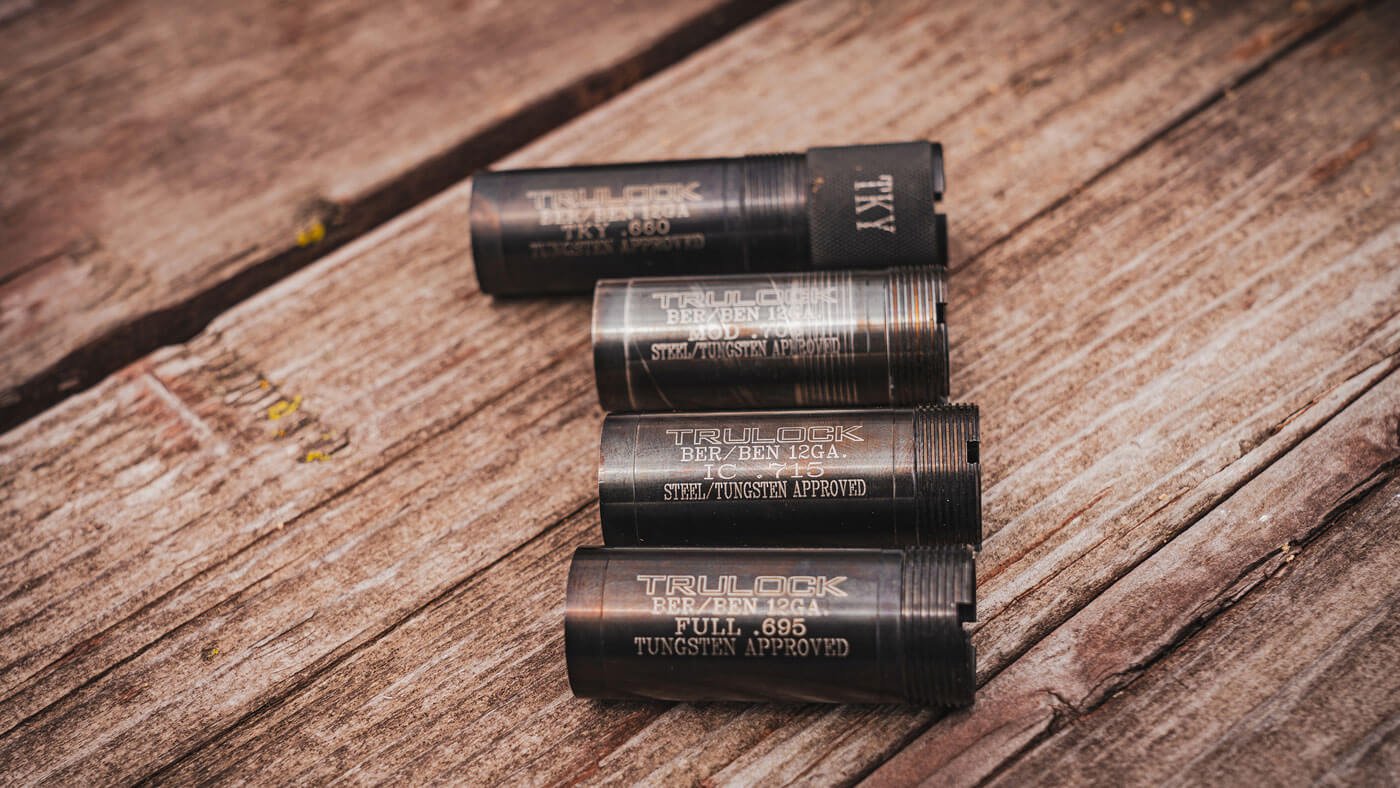
Shooting tips
Learning the basics of trapshooting is about more than the rules and proper equipment. Learning eye dominance, proper shooting form and stance, and proper shooting technique are also important to know as you are starting out. Here are some shooting tips to keep in mind as you get started with the basics of trapshooting:
Eye dominance
Eye dominance is one of the fundamental basics of trapshooting that you should learn when you are first starting out. Your dominant eye is the eye that will naturally “take over” whenever you are following the target. It also determines whether you should shoot left-handed or right-handed, since shooting right-handed as a right-eye dominant shooter will allow that eye to be looking down the barrel and aiming properly at the target, allowing you to more naturally lead your shot when trying to hit the target. Most of the time, your dominant eye will correspond with your dominant hand that you use to write with. However, this is not always the case. If you don’t know which eye is your dominant eye, check out this blog post on determining eye dominance.
Stance and technique
Proper shooting stance and technique should be one of the first lessons you learn whenever you start learning the basics of trapshooting. When you are standing at your shooting station, face your entire body towards the trap house. Your feet should be shoulder width apart, with the foot opposite of what hand you are shooting with a few inches forward of the other foot. For example, if you are shooting right-handed, your left foot will be a few inches forward of your right foot, and vice-versa for left-handed shooters. You should bend forward slightly at the waist to help lean into your shot and absorb recoil. Your back elbow should be extended out at a 45-to-90-degree angle to create a “pocket” in your shoulder to firmly place the shotgun against. This will both help stabilize you as you swing into the target, as well as helping with recoil. Shoulder your shotgun into that pocket, place your cheek firmly on the buttstock, and look down the barrel of the shotgun at the front of the trap house. At this point, you are ready to call for the target.
Shotgun shooting differs greatly from how you may shoot a rifle or a handgun. In shotgun sports like trapshooting, you are focusing on hitting a moving target, rather than aiming at one specific point on a target. Because of this, your shooting technique will differ from normal rifle shooting technique. When you are trapshooting, you are not aiming the shotgun, you are following the leading edge of the target with your eyes. It is important to keep both eyes open in order to fully see the trap field, and to be able to see the bead of your shotgun and the target simultaneously. As you follow the target with your eyes, your arms and shotgun should naturally follow where you are looking. To break the target, you should pull the trigger as you are swinging through and leading the target with your shotgun bead by a few inches. Ideally, you will shoot the target as it reaches the top of its upward rise before it begins to fall.
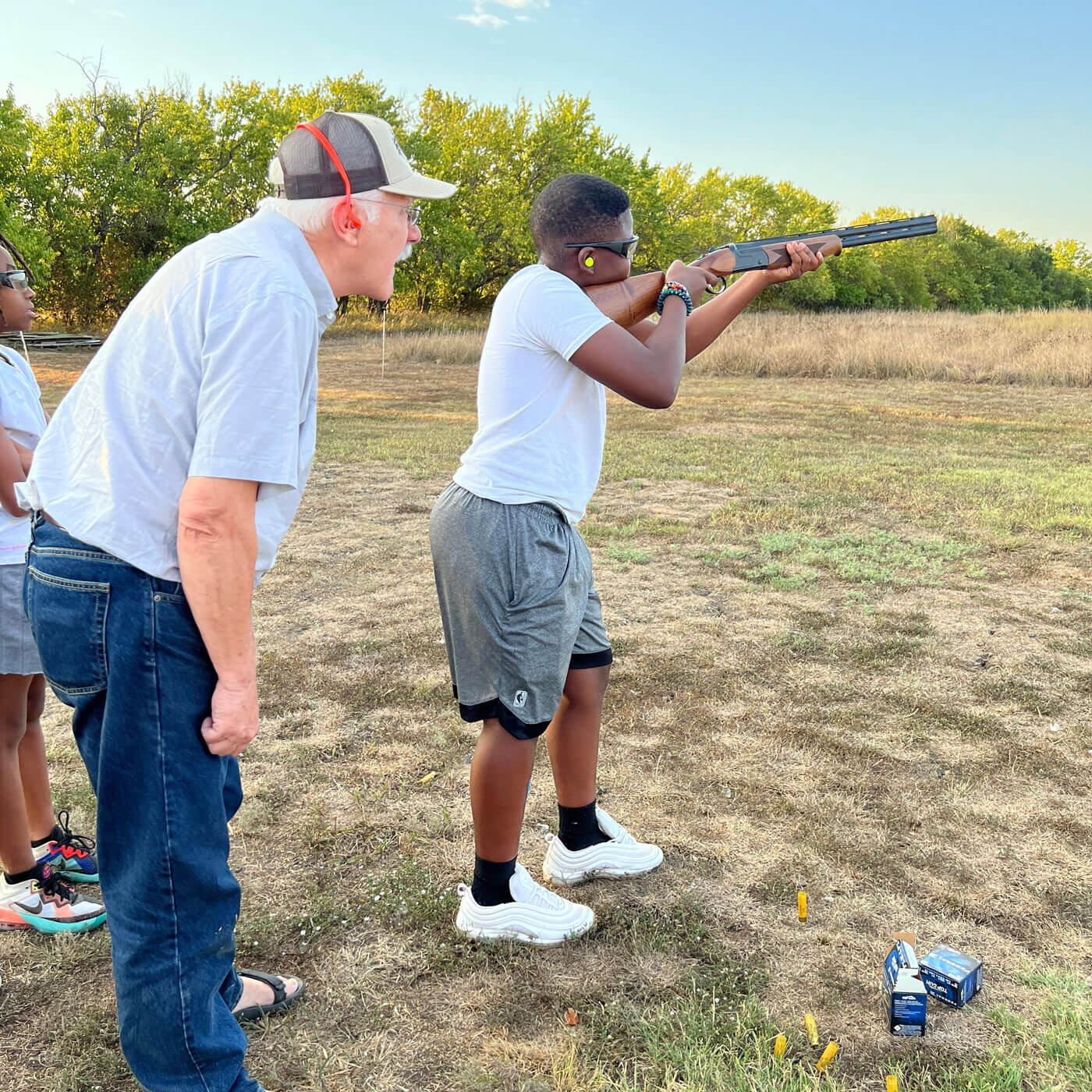
Trapshooting is an excellent introduction into both recreational shotgun sports and bird hunting. The basics of trapshooting are relatively simple to learn, and it’s a lifelong sport that shooters of all ages and skill levels can enjoy. Whether you’re looking to just have some fun on the weekends, or get more into competitive shooting, trapshooting offers many options for you to enjoy! If you’re looking to get into a new shooting sports discipline and expand your horizons as a shooter, make sure you grab your shotgun and give trapshooting a try!


